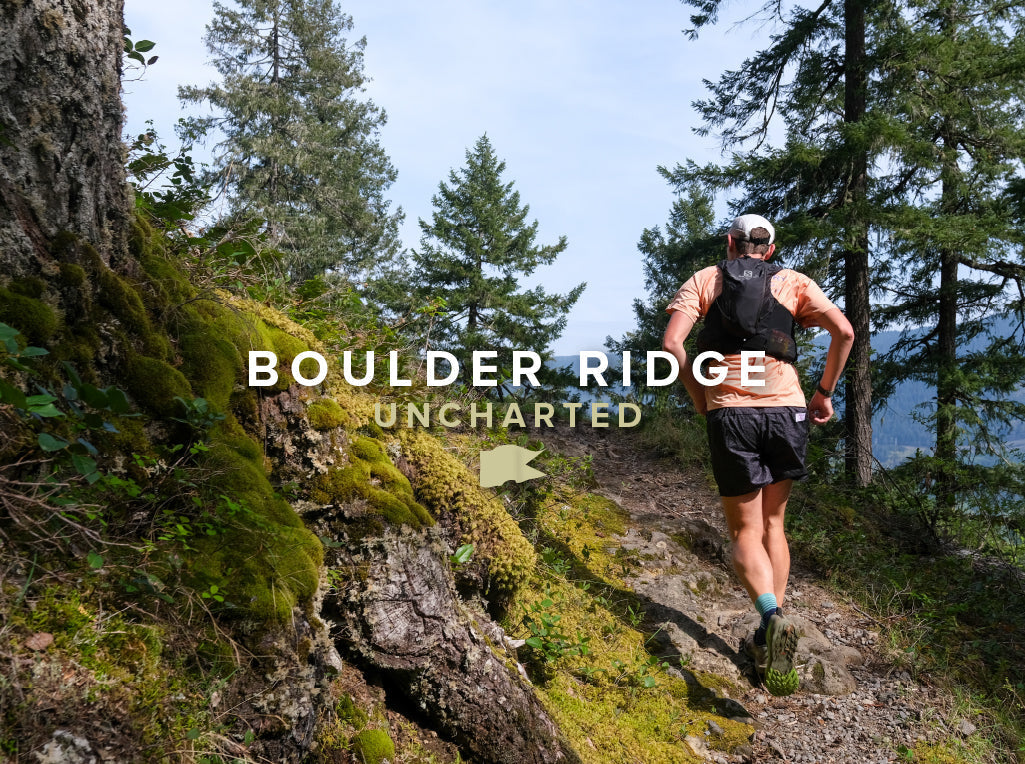Boulder Ridge - Uncharted

Uncharted is a challenge series created by Mack Robertson for the Greater Portland area that aims to get you out exploring new areas with pre-planned routes. While each area we highlight may not be new to you, we hope it inspires you to explore some lesser-known areas.
You can join the Uncharted Strava Group here.
BOULDER RIDGE BACKGROUND
There are some routes that don’t reveal their beauty all at once. Boulder Ridge is one of them. What begins as a mellow paved stroll through wetlands quickly builds into a ridge-top journey with expansive views, quiet forest, and the kind of well-graded climbing that keeps your legs working without overwhelming them.
Wildwood Recreation Area was once a Civilian Conservation Corps site in the 1930s before becoming an Army training area during World War II. It’s now managed by the Bureau of Land Management and serves as an accessible entry point to the Salmon-Huckleberry Wilderness. The area is known for its educational boardwalk loop, interpretive signs, and wildlife-rich wetlands. But beyond the family-friendly loop lies a much more rugged experience.
The Salmon-Huckleberry Wilderness itself was designated in 1984 as part of the Oregon Wilderness Act. It covers over 62,000 acres of forest, ridgelines, and remote drainages just southeast of the Bull Run Watershed. The Boulder Ridge Trail was constructed in 1981, just before the wilderness was officially protected, as a new access route to the higher country after trail access across private land to the north was lost.
THE ROUTE
11 Mile Route GPX File

The trail starts in the Wildwood Recreation Area, just off Highway 26. Be warned there is a $5 parking fee and the gate closes at 6:30PM so plan accordingly. You’ll begin by crossing a wide wooden bridge over the Salmon River and winding through the Cascade Streamwatch area on a short boardwalk through wetlands. At the signed junction with Boulder Ridge, the terrain shifts and the climbing begins.

From here, it’s a consistent ascent toward Huckleberry Mountain, but the grade is softened by frequent switchbacks and a well-built tread. The trail is in great shape and remarkably runnable for a route that gains over 3,000 feet in five miles. Early on, you’ll pass a massive cedar stump and cross a small creek on a footbridge. The forest is mostly closed in at this point, with bigleaf maple and alder giving way to hemlock and Douglas-fir as you climb.

One of the early landmarks is a viewpoint around mile 2.2, reached after a series of steady switchbacks and a rocky traverse. On a clear day, you’ll get a wide look west toward the Willamette Valley. As you continue climbing, the forest begins to transition again, with carpets of beargrass and bursts of rhododendron lining the trail. There’s another short spur trail—easy to miss—that leads to a dramatic clifftop perch with a view of Mount Hood. Worth the quick detour.

Just before mile five, you’ll reach the junction with the Plaza Trail. Though the Plaza Trail once continued west from here, that stretch is now decommissioned and fades quickly into brush and private land. At the junction, stay right. The remaining half-mile gently rolls along the ridge crest of Huckleberry Mountain through a mix of noble fir, lodgepole pine, and mountain hemlock.

The trail reaches a rocky spine with panoramic views of Mount Hood and, on a clear day, Mount Saint Helens off in the distance. On most maps the true Huckleberry Mountain summit is just a bit further. However, there is no longer a viewpoint here due to the surrounding forest canopy growing taller and taller over the years. I have our route mapped to this "true" summit for posterity sake, but feel free to turn around at this big open vista as you will not be missing much by not continuing to the mapped summit.
The descent is smooth and steady, with just enough technicality to stay interesting. With the exception of a few rocky stretches, much of the trail feels purpose-built for running, and the long switchbacks help keep the legs from blowing up. You’ll retrace your steps back to the Wildwood trailhead, with plenty of soft underfoot terrain to cruise on the way down.
While this trail sees its fair share of foot traffic, it rarely feels busy given the length and elevation gain. It’s a great choice for those looking to link up sustained climbing, forest immersion, and ridge-top views without getting too far from Portland.
